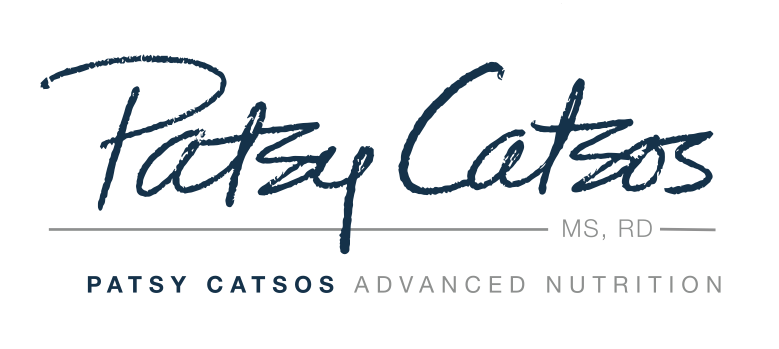Stephanie Clairmont, MHSc, RD.
Today we have a guest post from my Canadian colleague Stephanie Clairmont, MHSc, RD. Stephanie is a digestive nutrition expert, entrepreneur, culinary dietitian, and owner of the International Clairmont Digestive Clinic. Struggling for years with Irritable Bowel Syndrome herself, Stephanie now helps clients with IBS, IBD, Celiac Disease, and other digestive issues improve their health and feel better. She is passionate about using delicious recipes and real food to help her clients follow a digestive-friendly diet to relieve symptoms. Her new book is The IBS Master Plan: A real food approach to relieve digestive distress.
What’s better for your digestive health - eating three large meals or multiple smaller meals throughout the day? I’m sure you’ve heard all kinds of ideas as advice in the media and all around us is constantly conflicting. Let’s clear this up! Proper meal timing is a great strategy to reduce digestive distress – meaning symptoms such as gas, bloating, abdominal discomfort, diarrhea, and/or constipation. Today we’re going to share some tips to help guide you in timing your food intake throughout the day. We hope this helps to keep your gut happy!
1. Eat on a Consistent Schedule
Try to establish a meal schedule that you can stick to. Pick times in the day that work with your daily routine. Remember to take into account work, social, and active parts of your day. I recommend not eating for 2 hours before engaging in any exercise, check out my Top 4 Tips for exercising with IBS. Of course there are days when our schedules will change and we have to remember this. I am not always successful at this as life as an entrepreneur is always changing and to be honest, my days are never the same. However, I always try to get my breakfast, lunch, and dinner in at the same time… at the very least! This pattern helps your body get into a routine of when it expects to eat.
Example:
Breakfast @ 8 am
Lunch @ 12 pm
Snack @ 3 pm
Dinner @ 6 pm
2. Eat your Meals in a Relaxed Setting
When our lives get hectic, eating is often something that gets lost in the chaos. How often have you eaten in the car, standing up in the kitchen, or at your desk? (me too!!!) We have to really make an effort at being calm and taking time to appreciate our meals. This is especially important when you suffer from IBS!!! This will help calm down your body and mind and help you focus on digestion. As discussed in the article: Don't Stress - Digest when our body is experiencing stress, hormones direct blood flow away from our digestive system and towards the heart, brain, and skeletal muscles. It can be physical stress (like running up stairs or around the office), mental stress (worrying about an upcoming deadline) and emotional stress (anger or frustration towards a coworker). All these forms of stress distract your body from digesting the food you are eating and can result in uncomfortable symptoms such as gas and bloating. When you have IBS it is important that your attention is present on the food you are eating. For many of us, the workplace can be a source of stress, so I highly recommend moving away from your desk for a period of time at lunch. Find a quiet staff room, a peaceful picnic table outside, or a calm coffee shop nearby to enjoy your lunch.
3. Have a Meal or Snack Every 3 to 4 Hours
Spacing your meals and snacks 3 to 4 hours apart is great for digestion. This allows your body to completely digest the previous meal and have a break before you put it to work again. Constantly snacking throughout the day actually never gives your digestive system a break. That said, you also don’t want to eat any less than 2 hours apart! Your body’s cleansing wave happens every 90 to 120 minutes, so give your gut a rest for at least two hours. This means coffee, juice, smoothies, and snacks as well!
If you are going to have a snack during the day, make the most of it and include both a source of protein and complex carbohydrates. This combination will help satisfy your hunger and keep you full until next meal. Some satisfying low FODMAP snacks include: rice cake with nut butter, lactose-free yogurt with berries & a sprinkle of granola (my favourite brand is Love Grown Foods), or gluten-free crackers with old cheddar cheese some fresh cherry tomatoes and cucumber slices.
There will be days where your schedule gets thrown off; be kind to yourself and don’t get down. It doesn’t mean you’ve ruined everything. Just get back on track the next day. I hope by following these three simple steps, you can help your body digest and decrease the unpleasant symptoms of IBS and digestive distress.
Much love and good eating,
Stephanie
Stay in Touch! Subscribe to Stephanie’s Newsletter, The Relief Report.
Or check out her new book: The IBS Master Plan: A real food approach to relieve digestive distress
This page may contain affiliate links. We are a participant in the Amazon Services LLC Associates Program, an affiliate advertising program designed to provide a means for us to earn fees by linking to Amazon.com and affiliated sites.

